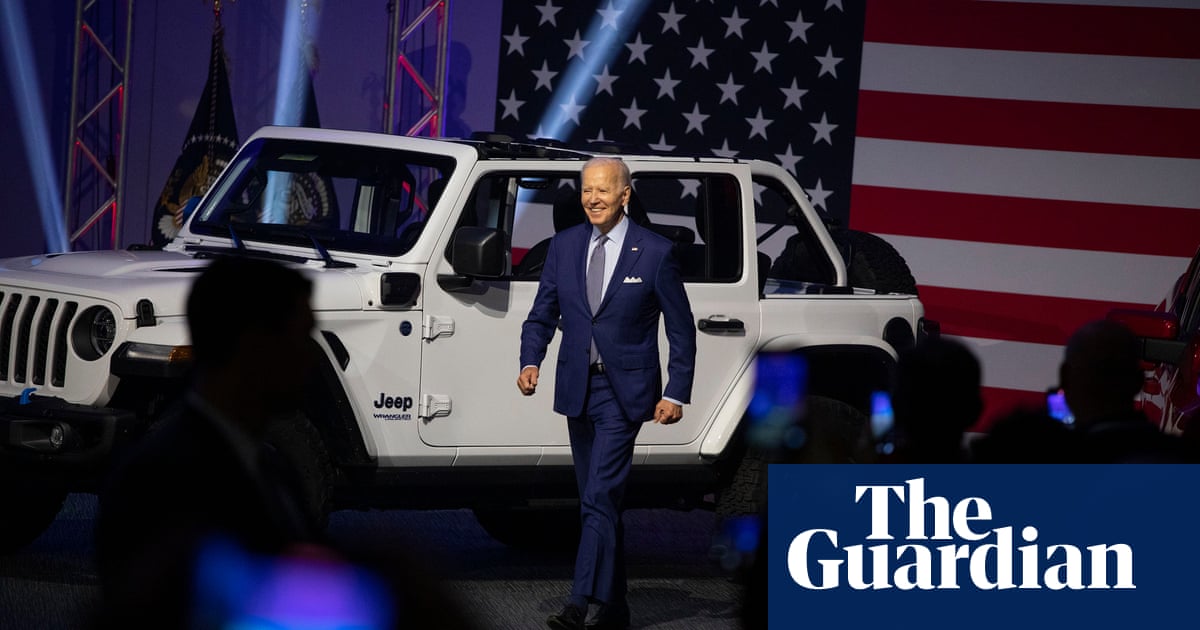
The Biden administration on Wednesday proposed strict new automobile pollution limits that would require that all-electric vehicles account for as many as two of every three new vehicles sold in the US by 2032 in a plan that would transform the US auto industry.
Under the proposed regulation, released by the Environmental Protection Agency (EPA), greenhouse gas emissions for the 2027 through 2032 model years for passenger vehicles would be limited to even stricter levels than the auto industry agreed to in 2021.
The EPA administrator, Michael Regan, insisted the targets were “readily achievable”, with EV sales tripling since Biden came to office, and despite the skepticism of some automakers about the pace of the transition needed for the plans.
Regan said: “By proposing the most ambitious pollution standards ever for cars and trucks, we are delivering on the Biden-Harris administration’s promise to protect people and the planet, securing critical reductions in dangerous air and climate pollution and ensuring significant economic benefits like lower fuel and maintenance costs for families.”
“A lot has to go right for this massive – and unprecedented – change in our automotive market and industrial base to succeed,” said John Bozzella, CEO of the Alliance for Automotive Innovation representing General Motors, Volkswagen, Toyota and others.
“Factors outside the vehicle, like charging infrastructure, supply chains, grid resiliency, the availability of low-carbon fuels and critical minerals will determine whether EPA standards at these levels are achievable.”
The announcement comes nearly two years after carmakers pledged to make electric vehicles comprise half of US new car sales by 2030 as part of a history-making transition from gasoline-powered engines to battery-powered vehicles.
Electric vehicles accounted for only 7.2% of US vehicle sales in the first quarter of the year, but the share of EV sales is on the rise – last year it was 5.8% of new vehicle sales.
Environmental groups have applauded the ambitious limits proposed by the Biden administration. Dan Becker, director of the Safe Climate Transport Campaign, said the EPA proposal should have been tougher. “Automakers talk out of both sides of their tailpipes, promising electric vehicles while delivering mostly the same old gas-guzzlers and lobbying for weak, loophole-riddled rules,” Becker said.
The proposal, if finalized, represents the most aggressive US vehicle emissions reduction plan to date, requiring 13% annual average pollution cuts. The EPA is also proposing new stricter emissions standards for medium-duty and heavy-duty trucks through 2032.
EPA projects the 2027-2032 model year rules would cut more than 9bn tons of CO2 emissions through 2055 – equivalent to more than twice total US CO2 emissions last year.
The president, who signed an executive order setting a target for half of all new vehicles sold in 2030 to be zero-emissions vehicles, also wants automakers to raise gas mileage and cut tailpipe pollution between now and model year 2026, which would be a significant step toward his pledge to cut US planet-warming greenhouse gas emissions in half by 2030.
The EPA estimates net benefits through 2055 from the proposal range from $850bn to $1.6tn. By 2032 the proposal would cost about $1,200 per vehicle per manufacturer, but save an owner more than $9,000 on average on fuel, maintenance and repair costs over an eight-year period.
The proposed regulation is not expected to become final until next year.
California in August moved to require all new vehicles sold in the state by 2035 be electric or plug-in electric hybrids, but must still seek an EPA waiver to proceed. Regan would not say how the EPA would react to a California request. “We’ll be on the lookout for that if it were to ever come,” he said.












